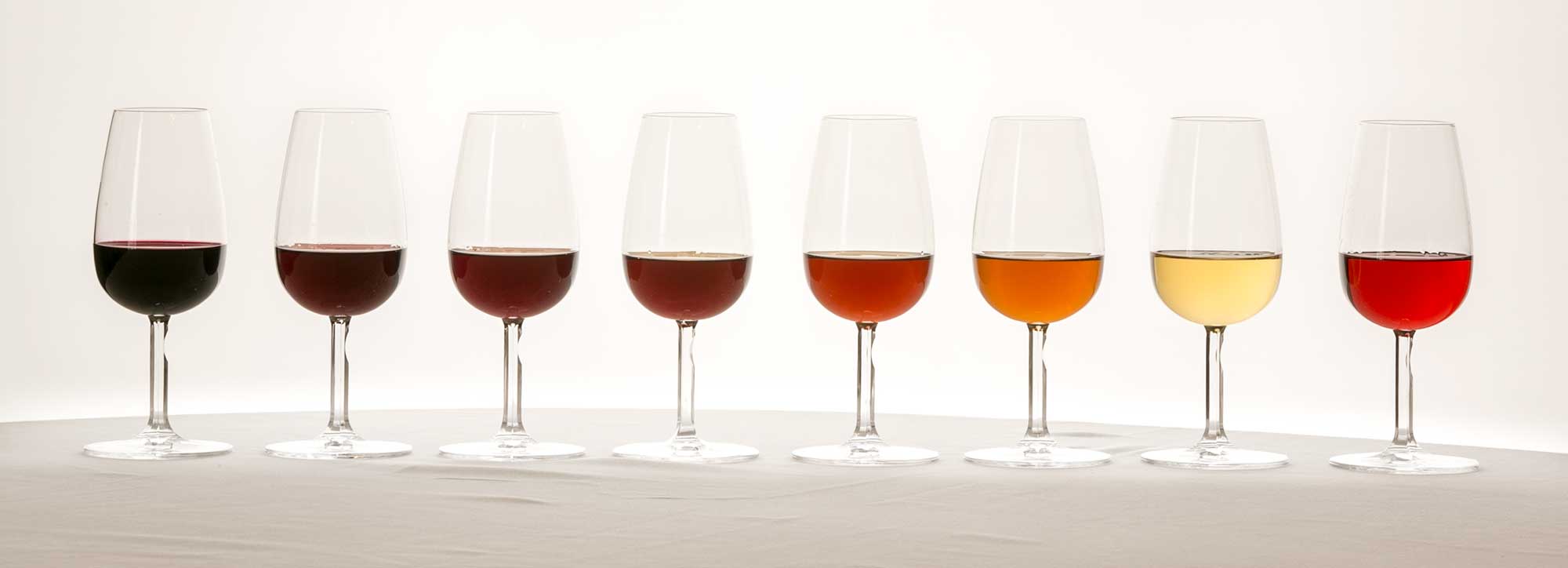
Port Wine is a fortified wine, as defined in EU legislation. It is produced in the Demarcated Region of the Douro under very specific conditions resulting from natural and human factors. The winemaking procedures, based on traditional methods, include stopping the fermentation of the must by adding grape brandy (benefício), making up lots of wine and ageing the wine.
Port Wine stands out from ordinary wines due to its unique characteristics: an enormous variety of types that surprise us with the wealth and intensity of their incomparable aromas, a highly persistent aroma and flavour, a high alcohol content (usually between 19 and 22% vol.), a vast range of degrees of sweetness and a assortment of colours. There is a set of categories that identify the different types of Port Wine.
The different types of red Port vary in colour from deep purple to light gold, with a range of intermediary hues (tawny, golden tawny, golden and light gold). White Port comes in various shades (pale yellow, straw and golden white), all intimately related to the winemaking technique used. When aged in cask for many years, white wines acquire, through a natural oxidation, a golden hue that is very similar to that of a very old tawny wine.
In terms of sweetness, Port can be very sweet, sweet, semi-dry or extra dry. Just how sweet a wine will be is a choice made during production; it depends on when the brandy is added to stop the fermentation of the wine
Port Wines can be divided into two major categories according to the manner by which they are aged.

Ruby Style
Are wines in which the winemaker looks to restrain the evolution of their deep red colour and maintain the fruit and strength of a young wine. This is the type of wine that you will find in the following categories, in ascending order of quality: Ruby, Reserve, Late Bottled Vintage (LBV) and Vintage. The finest category wines, especially Vintage, followed by LBV, are good for storing as they age well in bottle. We particularly recommend LBV and Vintage.
Tawny Style
Are obtained from lots of different wines that have aged for different lengths of time in casks or in vats. With age, the colour of the wines slowly develops into tawny, medium tawny or light tawny, with a bouquet of dried fruits and wood; the older the wine, the stronger these aromas. The present categories in this style are: Tawny, Tawny Reserve, Tawny with an Indication of Age (10, 20, 30 and 40 years old) and Colheita. These are blends of wines from several years, except for Colheitas, wines of a single year that are similar to an aged Tawny of the same age. These wines are ready to drink when they are bottled. We particularly recommended a Tawny with an Indication of Age and Colheita.
White Port
There are several styles of White Port according to how long they have been aged and to their different degrees of sweetness (extra dry, dry, semi-sweet, sweet, very sweet and Lágrima), the result of the way each is made.
In the case of White Ports, in addition to the sweetness, there are variations in the winemaking methods that are reflected in the profile of the wine. We have wines with fresh and vigorous aromas and others that are more traditional, with more honey and dried fruit aromas. These differences are characteristic of each style.
In addition to the traditional White Ports, there now are other wines with a floral and complex aroma and a minimum alcohol content of 16.5% (Light Dry White Port) capable of meeting the demand for less alcoholic Ports.
Rosé
Rosé is a pink-coloured wine obtained by light maceration of red grapes, with no oxidation during preservation. These are wines to be drunk young and are highly aromatic with notes of cherry, raspberry and strawberry. They are soft and pleasant on the palate. They are best drunk chilled or with ice, and can also be served in several cocktails.